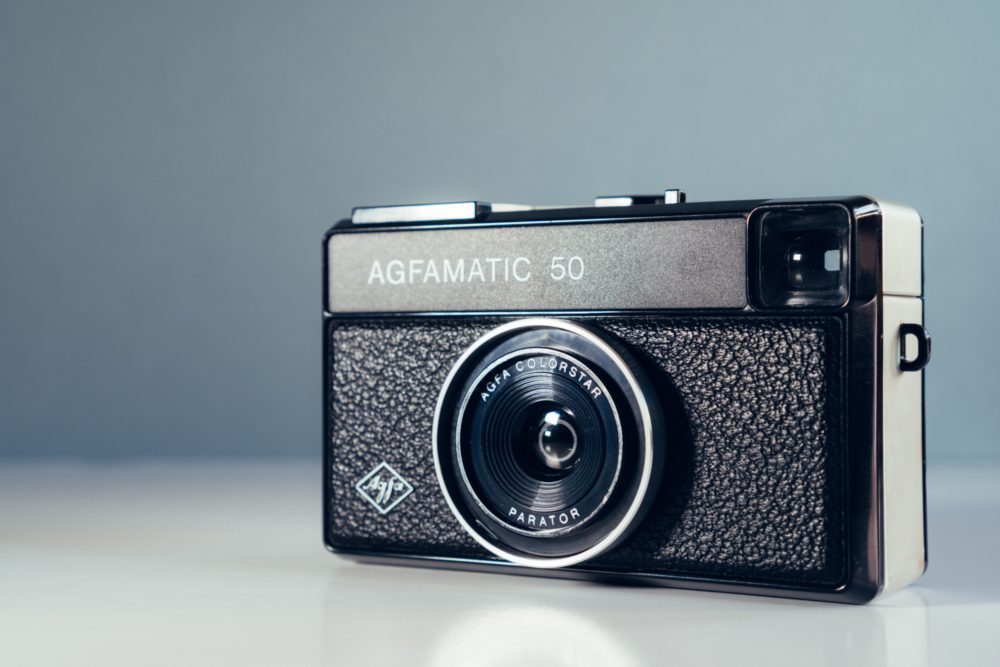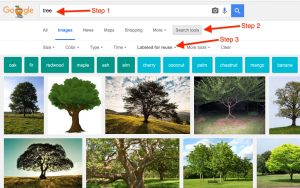
Are you posting a story on your website or blog? You may want an illustration — what newspaper editors sometimes call “art” — to accompany it. If you’ve shot a photo or you work at a news agency and can use something from a staff photographer, then great. If not, what do you do?
First let’s be clear: It is not OK to snatch photos off the internet and post them on your site. Unfortunately, such bad habits have become common among many media organizations. If you use a photo that’s not yours and you don’t have permission, that’s copyright infringement. Not only is it wrong, but the creator could pursue legal action.
Fortunately for a bare-bones newsroom or independent writer or blogger, there are loads of websites offering free or “public domain” photos and clip art. But before we know what to look for, we need to understand the basics of how images are licensed online.
Copyright vs. public domain:
In the United States and European Union, as soon as a photographer hits the shutter and makes an image, the photographer owns the copyright (unless he or she sells those rights to another person or organization. Sometimes, as in the case of a New York Times photographer shooting for the paper, this is called “work for hire”). Contact the person or organization for permission. Only they can grant permission or place the work in the public domain.
A public domain image is no longer under copyright protection and may be used freely without permission.
Photos posted on Facebook, Flickr, Instagram, Snapchat, VKontakte and other social-media platforms are not public domain — they are still covered by the creator’s copyright. There is, however, a “fair use” right — a photo or video clip can sometimes be used if that photo or video is the actual news story. See the University of Minnesota’s Thinking Through Fair Use tool when considering if an image can be used under such provisions.
Harvard Law School and the Columbia Journalism Review offer tip sheets for journalists about public domain and licensing. Also, there is legal scholarship on fair use in the rapidly changing world of social media.
Creative Commons licensing:
Many content creators who are willing to share their work use licenses defined by the nonprofit group Creative Commons (CC). CC licenses offer photographers and other creators a clear, standardized way to maintain copyright while allowing their work to be used, for free, under certain conditions. CC licenses cannot be revoked.
When work is protected by one of the six CC licenses, it is often accompanied by a short code. Journalists should familiarize themselves with these codes:
- BY – This license lets you do anything to the work as long as you credit the source. You can even sell work that contains imagery with a “BY” license.
- BY-SA – This allows you to alter or build upon the work (like using it in a collage), as long as you credit the author and license the new work under the same terms.
- BY-ND – This license allows you to use the work, as long as it is credited and not altered.
- BY-NC – Here you can remix or otherwise alter the work, but you must credit the original content creator and you cannot use the work in any commercial way.
- BY-NC-SA – This means you can alter the work as long as you credit the creator, do not use it in a commercial way, and license any new creation under the identical terms (share-alike).
- BY-NC-ND – This is the most restrictive of the CC licenses, allowing you to download and share the work with full attribution, but not to alter it in any way or use it commercially.
The photographer can also place a work in the public domain, meaning it is free to use and/or modify without attribution. Sometimes this is called Creative Commons Zero. Once in the public domain, no one can control how content is used.
It’s important to note that there is one patent problem with CC: Anybody can take a digital file from the internet and upload it and mark it with such a designation. That person may not be the creator and copyright holder. Use at your own risk.
The restrictions outlined above sometimes apply to other works on the internet – for example, clip art and some forms of written content. But the decision about how these works can be used must be made by the copyright holder, usually the creator. The post you are reading is licensed under CC. Click the button at the end of this page to see our terms (our work is covered under a share-friendly “BY” license).
Searching:
The image-search tool with the broadest reach is probably Google Images. Within Google Images, you should limit your finds to work with expansive usage rights. After searching for your keyword, look beneath the search bar and click on:
- “Search tools”
- “Usage rights”
- Select “labeled for reuse,” or one of the other options as applicable
- After you select an image, click “Visit page”
Now, images that appear will be generally free to use; some will require attribution.
A lot of pictures will appear from Wikimedia, which hosts most imagery available on Wikipedia and contains tens of millions of files. Licensing details should be explained below each image. When in doubt, don’t use the image.
Public domain image sources:
New collections of photos appear online frequently. Here are a few that Journalist’s Resource has used:
- Pixabay offers tens of thousands of images in the public domain — free to use without attribution.
- Wikimedia, mentioned above, is a vast, searchable repository in its own right.
- Libreshot.com, Unsplash and Public Domain Pictures feature high-resolution, public domain images.
- The New York Public Library has a huge archive of old photographs.
- Wikipedia maintains a long list of public-domain image resources.
Other free image sources:
- iStockPhoto by Getty offers subscriptions to license works and some free imagery.
- Many businesses provide handout photos as promotional material. Larger companies with robust public relations departments often make photos available on the company’s website under a navigation menu heading labeled “media,” “photos,” “multimedia,” “downloads,” or the like. Non-profit groups also often distribute free imagery.
- Government websites: A lot of work by government agencies is in the public domain, but it’s always best practice to attribute. Often images are available in an agency’s press room or media center. Need a photo of an avocado or a cow? The U.S. Department of Agriculture offers a link to its Flickr stream, where images are usually accompanied with simple CC-BY licenses. Work funded by the U.S. government is theoretically in the public domain because the government is an extension of the public — unless the imagery has been classified.
- Foreign governments often work differently. The European Union offers images of European leaders and public buildings for news reports. You must register to download full-size files and they must be credited to the European Union. The Kremlin lists its photos, such as this one of President Vladimir Putin, with a CC-BY license.
Some cautionary guidance:

It is worth repeating that if you are unclear about an image’s licensing restrictions, consult an attorney or your editor. The safest choice might be to forgo using that image and find another.
You should also be aware that some websites carry images with a mix of usage restrictions. On the popular photo-sharing platform Flickr, each creator can choose different licensing terms — or they might list nothing at all. If the creator does not specify the terms of usage, you should assume the image is protected and should not be used.
How to save the image:
If you’re on a Mac, hold down the control key and click on the image with your mouse. You will be offered the option to “save as.”
On a PC, right click and choose “save.”
On both platforms you can also often drag a photo to a folder or your desktop.
Other useful resources:
- GisGeography.com offers a tutorial on accessing free national space agency data and satellite imagery from around the world.
- Speaking of space, NASA.
- Library of Congress — the biggest library in the world houses hundreds of thousands of photographs and drawings in digital form. Many images are free to reproduce (and different download sizes are available), but be sure to check.
- The J. Paul Getty museum offers over 100,000 historical images and reproductions of artworks through its Open Content Program. Search here.
- The Metropolitan Museum of Art in New York also offers some imagery. Read the terms here.
- Harvard Law School’s tip sheet includes sources of public domain audio and video.
- First Draft News has a flow chart on how to verify if a news photo is what it claims to be.
Keywords: photography, digital newsroom, digital media, new media, fair use, blogging, open access
Journalist’s Resource would like to thank photographer and multimedia instructor Dean C.K. Cox for his help writing this post.
